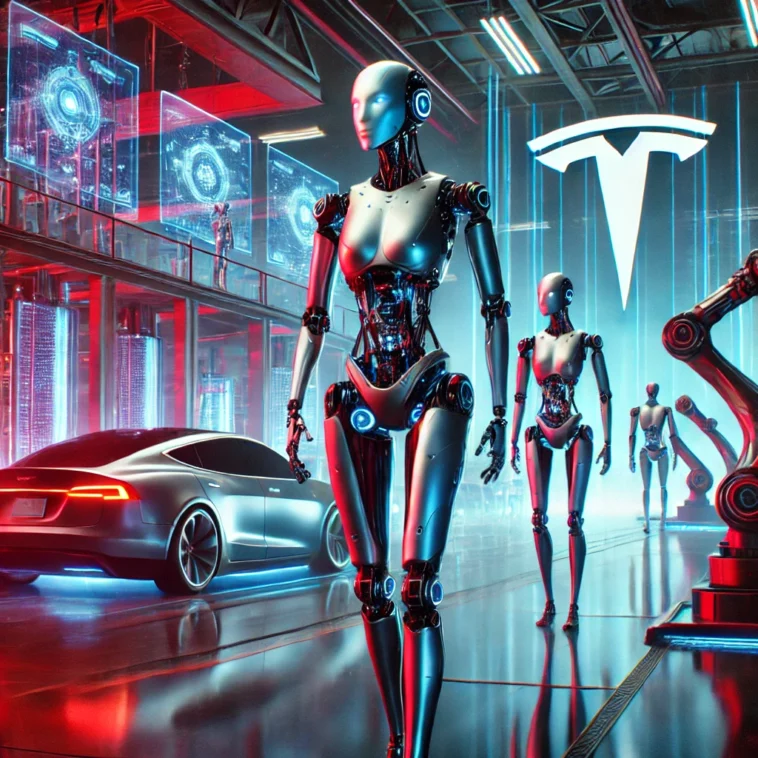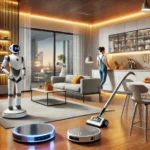 Tesla Humanoid Robots: The Future of Automation and AI Unveiled
Tesla Humanoid Robots: The Future of Automation and AI Unveiled
In a world driven by technology, Tesla continues to push the boundaries of innovation — this time with humanoid robots. These futuristic machines are more than just robots; they’re designed to seamlessly blend into our daily lives, transforming the way we work, live, and interact with technology. Let’s dive deep into Tesla Humanoid Robots, exploring how they’re redefining automation and artificial intelligence (AI).
 What Are Tesla Humanoid Robots?
What Are Tesla Humanoid Robots?
Tesla’s humanoid robots, often referred to as Tesla Bot or Optimus, are cutting-edge, human-like machines engineered to perform tasks traditionally done by humans. With advanced AI systems, powerful sensors, and a sleek design, they’re built to assist, automate, and adapt.
 Key Features of Tesla Humanoid Robots
Key Features of Tesla Humanoid Robots
-
Height & Weight: 5’8” tall, 125 pounds — designed to resemble human proportions.
-
Power: Battery-powered with up to 8 hours of operation.
-
AI Integration: Uses Tesla’s advanced AI neural network (like in Tesla’s self-driving cars).
-
Vision: Equipped with cameras and sensors for real-time environmental analysis.
-
Dexterity: Human-like hands for handling objects, making it perfect for complex tasks.
 How Tesla Humanoid Robots Work
How Tesla Humanoid Robots Work
Tesla humanoid robots are powered by the same AI technology that fuels Tesla’s Autopilot. Here’s a breakdown of their functionality:
-
Perception & Awareness
Using built-in cameras, sensors, and AI, they can “see” and analyze their surroundings. -
Decision Making
The AI brain processes data in real time, deciding the best actions to complete tasks. -
Motion Control
Electric motors in joints allow smooth, human-like movement — walking, carrying, lifting, and more. -
Learning & Adapting
Over time, these robots learn from experiences, becoming faster and more efficient.
 The Role of Tesla Humanoid Robots in Automation
The Role of Tesla Humanoid Robots in Automation
Automation is evolving — and Tesla’s robots are at the forefront. Here’s how they’re transforming industries:
 1. Manufacturing Revolution
1. Manufacturing Revolution
Tesla plans to use these robots in its own factories, automating repetitive tasks like assembling parts and moving heavy objects. This boosts production speed while reducing human fatigue.
 2. Warehouse Operations
2. Warehouse Operations
Think of Amazon-style warehouses, but run by humanoid robots. They can sort, package, and manage inventory with precision, ensuring faster and more reliable logistics.
 3. Household Assistance
3. Household Assistance
Imagine having a personal assistant at home — cooking, cleaning, or even gardening. Tesla’s robots aim to handle these chores, giving you more free time.
 4. Healthcare Support
4. Healthcare Support
They can assist elderly or disabled individuals, providing mobility support, fetching items, or even offering companionship.
 5. Dangerous Jobs
5. Dangerous Jobs
From construction sites to disaster zones, these robots can step in where it’s too risky for humans, ensuring safety without compromising productivity.
 AI at the Core: How Smart Are T Humanoid Robots?
AI at the Core: How Smart Are T Humanoid Robots?
Tesla’s humanoid robots are driven by a highly sophisticated AI brain. The same tech behind Tesla’s self-driving cars is integrated into the robot, allowing it to:
-
Understand language and respond naturally
-
Recognize objects and people
-
Navigate complex environments
-
Learn from mistakes and improve
The goal? To create robots that aren’t just task-oriented but genuinely helpful — understanding human needs and adapting accordingly.
 How Are Tesla Humanoid Robots Powered?
How Are Tesla Humanoid Robots Powered?
Efficiency is key. These robots rely on Tesla’s proprietary battery technology, optimized for long life and rapid charging.
-
Battery Capacity: 2.3 kWh
-
Battery Life: Up to 8 hours
-
Charging Time: Fully recharges in under 2 hours
Tesla’s battery innovations ensure these robots stay operational without frequent downtime.
 Impact on Jobs and Economy
Impact on Jobs and Economy
A common concern with automation is job displacement. However, Tesla’s vision isn’t about replacing jobs — it’s about reshaping them.
-
New roles will emerge in robot maintenance, programming, and AI supervision.
-
Productivity will skyrocket as robots handle repetitive tasks, leaving humans to focus on creativity and problem-solving.
-
Cost reduction for businesses means cheaper products and faster services for consumers.
 Tesla Humanoid Robots: How Much Will They Cost?
Tesla Humanoid Robots: How Much Will They Cost?
Elon Musk has hinted that Tesla Bots aim to be affordable — with early projections suggesting a price under $20,000. This could make them accessible not just for businesses but also for personal use.
 The Future of Tesla Humanoid Robots
The Future of Tesla Humanoid Robots
So, what’s next? Tesla’s roadmap hints at exciting developments:
-
Enhanced AI capabilities for more complex tasks
-
Improved dexterity — like human fingers for delicate tasks
-
Emotional intelligence — recognizing emotions and responding accordingly
-
Global accessibility — making these robots mainstream, from homes to businesses
 Are We Ready for Tesla Humanoid Robots?
Are We Ready for Tesla Humanoid Robots?
Tesla humanoid robots are not just futuristic concepts anymore — they’re a reality that’s unfolding before our eyes. With their blend of AI intelligence, human-like design, and automation capabilities, they’re set to revolutionize industries and daily life alike.
Whether you envision a robot helping around the house or transforming global industries, Tesla’s humanoid robots are shaping the future faster than we imagined. The only question is: Are we ready for them?

 What Do You Think?
What Do You Think?
Would you welcome a Tesla Bot into your home or workplace? Let’s discuss in the comments below!
 Related Reads: Explore More About AI Innovations!
Related Reads: Explore More About AI Innovations!
Curious about how AI is evolving beyond humanoid robots? Check out our in-depth guide on the Best AI Tools for 2025: The Future of Technology at Your Fingertip — discover the smartest, game-changing tools that are shaping industries worldwide!
Share this:
- Click to share on Facebook (Opens in new window) Facebook
- Click to share on X (Opens in new window) X
- Click to share on LinkedIn (Opens in new window) LinkedIn
- Click to share on Reddit (Opens in new window) Reddit
- Click to share on Tumblr (Opens in new window) Tumblr
- Click to share on Pocket (Opens in new window) Pocket
- Click to share on WhatsApp (Opens in new window) WhatsApp


